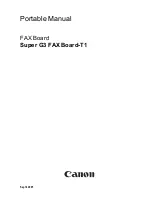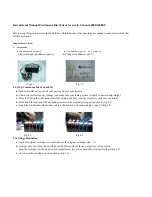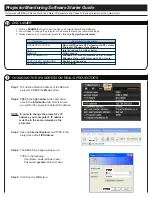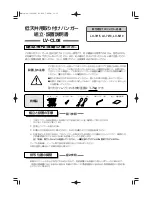
22
V
e
rsio
n 2,
06
.0
8.
201
0 / M
o
d
u
leV
e
rs
io
n 1.
0
Projecting the DECT network
Gigaset N870 IP PRO / LUG IE-UK_IM en / A31008-XXXXX-XXXX-X-XX / preparation.fm / 8/24/18
connections. With a maximum of eight handsets per base station, this means that four Gigaset
N870 IP PRO base stations would be required.
If we assume that a maximum of 50% of the available handsets are making a call simultaneously
in a hotspot, 60 handsets can be used with four base stations.
If interference frequently occurs at a hotspot or more than 30 connections are required simulta-
neously, the following measures are possible:
•
Distribute the base stations that cover the hotspot as widely as possible at the boundaries of
the hotspot so that they are as far away from each other as possible and mutual interference
is minimised.
•
If this measure is not sufficient, use walls or other suitable means to diminish the strong signals.
•
It might also be helpful, if the circumstances at the location allow, to arrange the base stations
in the shape of a ball, i.e., cover the hotspot through floors and ceilings.
When optimising the coverage of the hotspot areas, make sure that handsets do not suddenly
occupy the call channels of the hotspot base stations that were previously supplied by other
base stations. When establishing a connection, handsets always occupy channels of the base
station that provides the strongest signal. Therefore, moving the hotspot base stations may
affect other base stations and you may have to relocate the base stations of the entire network.
Material characteristics and interference factors
There are a number of interference factors that influence the range and quality of the transmission
in particular. The types of interference factors include:
•
Interference as a result of obstacles that diminish the signal transmission, creating radio shadows
•
Interference through reflection that restricts the call quality (e.g., crackling or background noise)
•
Interference through other radio signals that can lead to errors in transmission
Interference due to obstacles
Possible obstacles are:
•
Building constructions and installations such as reinforced concrete ceilings and walls,
stairwells, long corridors with fire doors, uptakes and cable channels.
•
Metal-clad rooms and objects such as cold stores, computer rooms, metallised glass areas
(reflections), firewalls, tank systems, refrigerators, electrical boilers etc.
•
Movable metal objects such as lifts, cranes, carts, escalators, shutters
•
Room furnishings such as metal shelves, filing cabinets
•
Electronic devices.
It is often difficult to locate the exact source of the interference; particularly if the reception
power of the local DECT signals fluctuates strongly within a few centimetres. In these cases,
the interference can be reduced or corrected by small changes to the position.
Wireless coverage in lifts is normally poor or not available at all (
















































